Blockchain technology has levelled up in many sectors since the day it entered the life of human beings and continues to do so. In this article, we will tell you what you need to know about the Eldrond (EGLD) project, which brings a different approach to one of the internal problems of Blockchain technology.
Problem
The problem is the scaling of the blockchain to meet high demands in a short period of time. Large projects such as Ethereum, which is known to almost the whole world today, are working to solve this problem (the merge update that took place recently is also a study on this problem). Solutions made in this area are also classified as Layer 1 and Layer 2.
Elrond, which appears as a Layer 1 sharding solution, was created based on the problems mentioned above and was released in 2017 by Lucian Toeda, Beniamin and Lucian Mincu.
Elrond(EGLD) is a public blockchain that aims to provide security, efficiency, scalability and interoperability beyond existing technology for distributed applications, enterprise use cases and the new internet economy. The two most important features that distinguish Elrond from other blockchains are the Adaptive State Sharding and Secure Proof of Stake consensus mechanism.
Adaptive State Sharding
In order to understand what Adaptive State Sharding is, Elrond’s unique technique, it is first worth knowing what sharding is. Sharding is a scaling technique that splits data into smaller pieces, distributing them to multiple network parts, each of which processes transactions and holds multiple nodes. Elrond’s Adaptive State Sharding combines 3 types of sharding. These are;
- Network Sharding: Addresses the way nodes are divided into parts, and is meant to optimize communication, since message propagation within one part can be done much faster than spreading across the entire network.
- Transaction sharding: Manages the way transactions are mapped to the parts they will be processed. Transactions are processed according to certain criteria, and each part processes transactions in parallel with the other part.
- State Sharding: State sharding is the most challenging approach. Unlike the fragmentation mechanisms described earlier, in which all nodes store the entire state, in state-fixed blockchains, each fragment retains only a part of the state.
Elrond’s Adaptive State Sharding scaling technique enables it to achieve scalability without hindering network usage with the three sharding mechanisms mentioned above. In addition, due to parallel transaction processing with this technology, the transaction volume will increase significantly, and the fees will decrease significantly. Already looking at it, these two criteria are seen as the main obstacles to the widespread adoption of blockchain technology.
Secure Proof of Stake
Elrond’s consensus approach is called Secure Proof of Stake (SPoS). It is a consensus mechanism and aims to increase the efficiency of the speed of verification by validators. As we mentioned earlier in our article, since Eldrond’s network consists of parts, not a single chain, SPoS choose validation nodes to generate blocks within shards, rather than the entire network. In this way, it does not compromise scalability and increases the verification speed.

The Elrond WASM VM
The execution of SmartContracts plays a central role in modern blockchain networks. Elrond has developed its own virtual machine to create a smart contract. Because Elrond VM implements WebAssembly, conctract can be written with multiple programming languages. Some of these languages are C#, C/C++, Go, Rust and TypeScript.
Elrond Tokenomics
$EGLD (eGold) is the native token of the Elrond network and is used for the functioning of the network. According to CoinMarketCap data, the current circulating supply of $ EGLD is 23,727,946, while the maximum supply is it is 31,415,926. As of the date of writing, the current price is $42.64, while the Market Cap is $1,013,781,595. The token distribution and token distribution plan of this product, which has annual inflation of about 13%, are as indicated in the tables below.
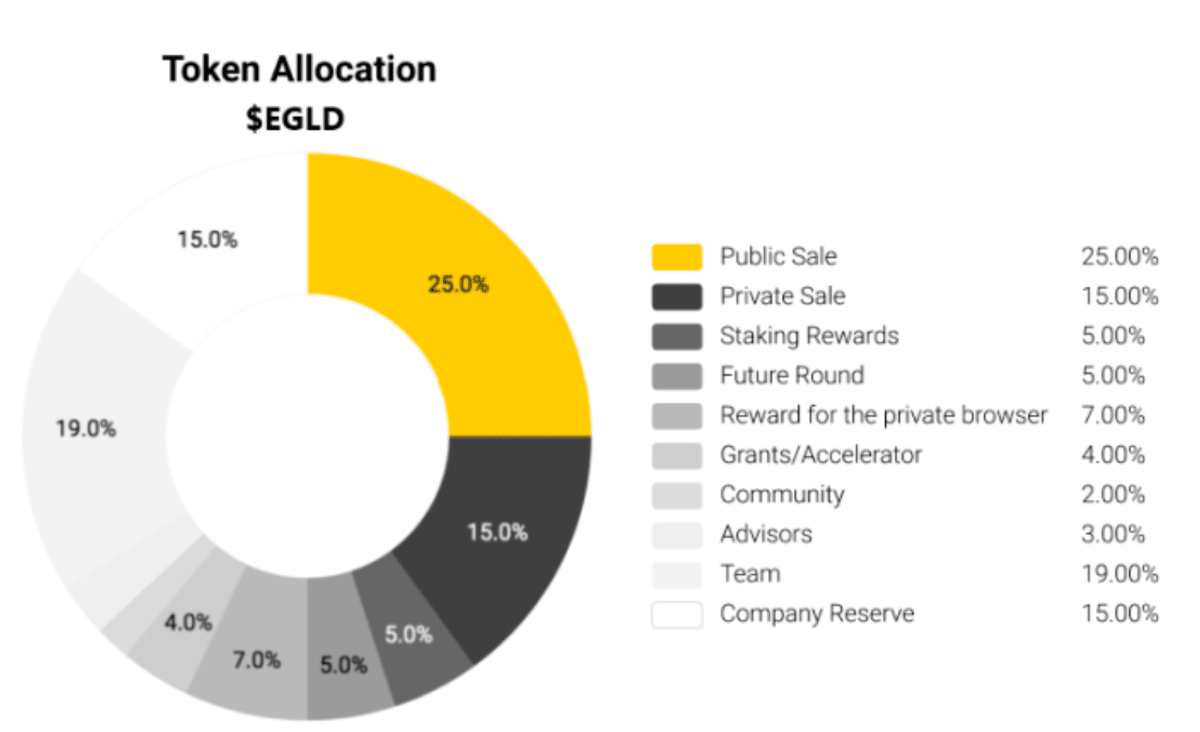
- Public sales: 25%
- Private token sale: 15%
- Team: 19%
- Future Round: 5%
- Reward for the Private Browser: 7%
- Staking Rewards: 5%
- Grants/Accelerator: 4%
- Community: 2%
- Advisors: 3%
- Company Reserve: 15%
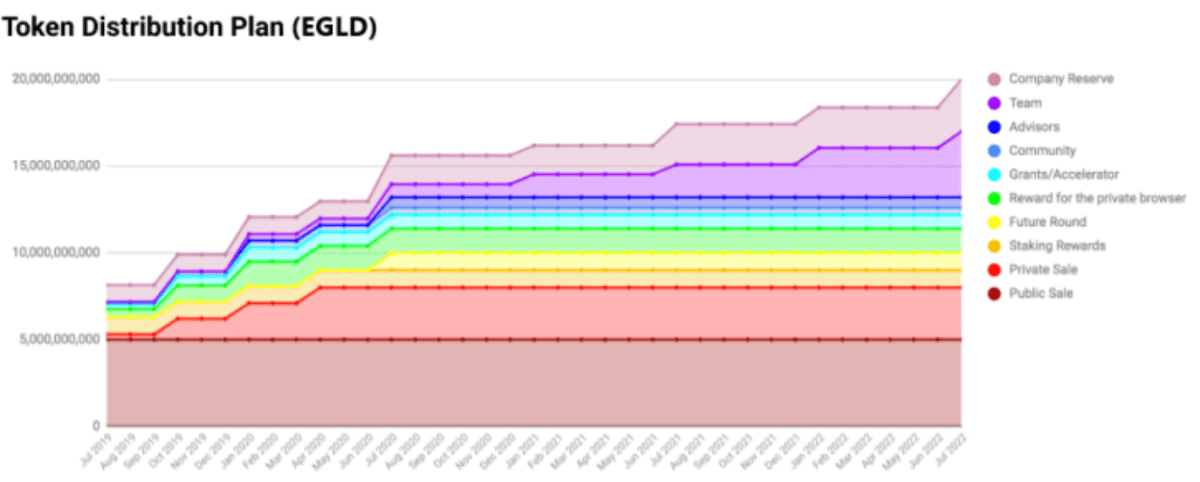
Elrond Roadmap
We observe that the Elrond team, which started its activities in 2018, has fulfilled all the promised developments up to the date of writing the article. In the roadmap mentioned below, there are planned developments regarding Elrond(EGLD) in the future.

Elrond Team
Elrond(EGLD) was created by a team of 13 engineers and researchers as well as entrepreneurs who have worked at various technology companies such as Microsoft, Google, Intel and NTT DATA and have experience working with blockchain platforms.
Briefly, if we talk about the founders and core team of Elrond;
- CO-FOUNDER AND CEO – Beniamin Mincu
- CO-FOUNDER AND COO – Lucian Todea
- CO-FOUNDER AND CIO – Lucian Mincu
- HEAD OF RESEARCH – Felix Crisan
- HEAD OF TECHNOLOGY – Radu Wee
- HEAD OF ENGINEERING – Adrian dobrita
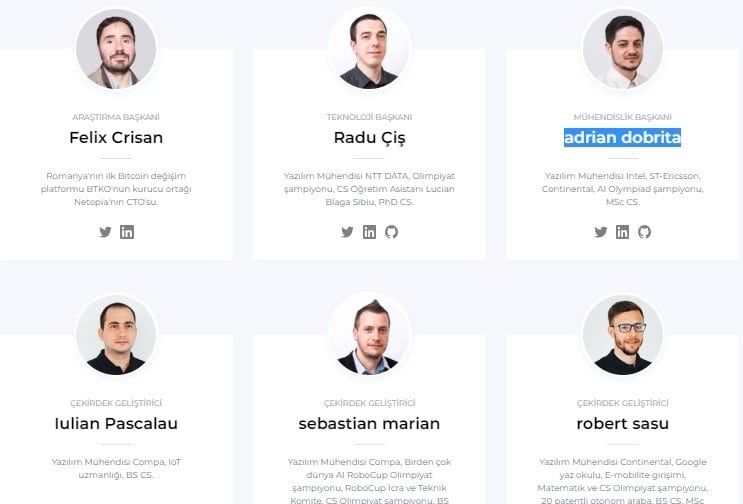
The consultant staff:
- BUSINESS CONSULTANT – Alex Iskold
- ECONOMIC ADVISOR – Alex Tabarok
- TECHNICAL CONSULTANT – Grigor Rosu
- BUSINESS CONSULTANT – Andrei Pitis
- TECHNICAL CONSULTANT – Fabio C. Canesin
- TECHNICAL ADVISOR – Ethan Fast
- TECHNICAL ADVISOR – Raul Jordan
- BUSINESS CONSULTANT – Danilo S. Carlucci
Elrond Partners
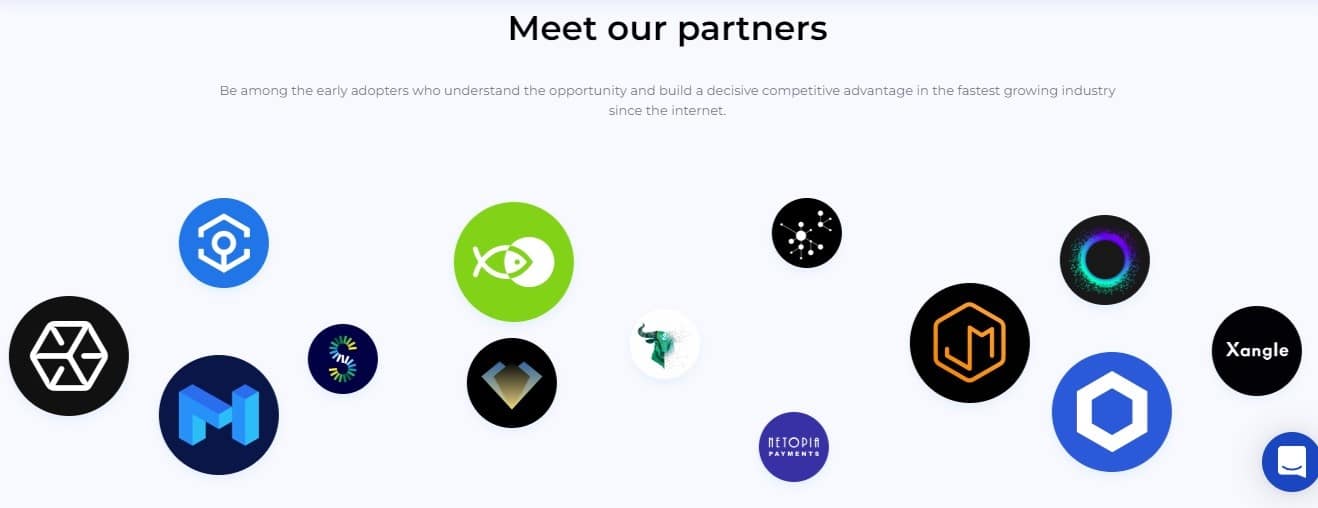
Elrond(EGLD), Crypto.com, Band Protocol, Travelbybit, Binance Staking, Cere Network, Stake Capital, Everstake, Matic Network, and Stake Fish has a strong partnership staff with names such as.
Summary
Elrond is a public blockchain that aims to provide security, efficiency, scalability and interoperability beyond existing technology for distributed applications, enterprise use cases and the new internet economy. There are 2 main features that make Elrond different from other blockchains. These are Adaptive State Sharding and Secure Proof of Stake which is a consensus mechanism. $EGLD (eGold) is the native token of the Elrond network and is used for the functioning of the network. The current circulating supply of $EGLD is 23,727,946, while the maximum supply is it is 31,415,926. Elrond was created by a team of 13 engineers and researchers as well as entrepreneurs who have worked at various technology companies such as Microsoft, Google, Intel and NTT DATA and have experience working with blockchain platforms. Finally, Elrond’s cyrpto.com they have such strong partnerships.
VISIT OUR OTHER BLOGS: ALL NEWS

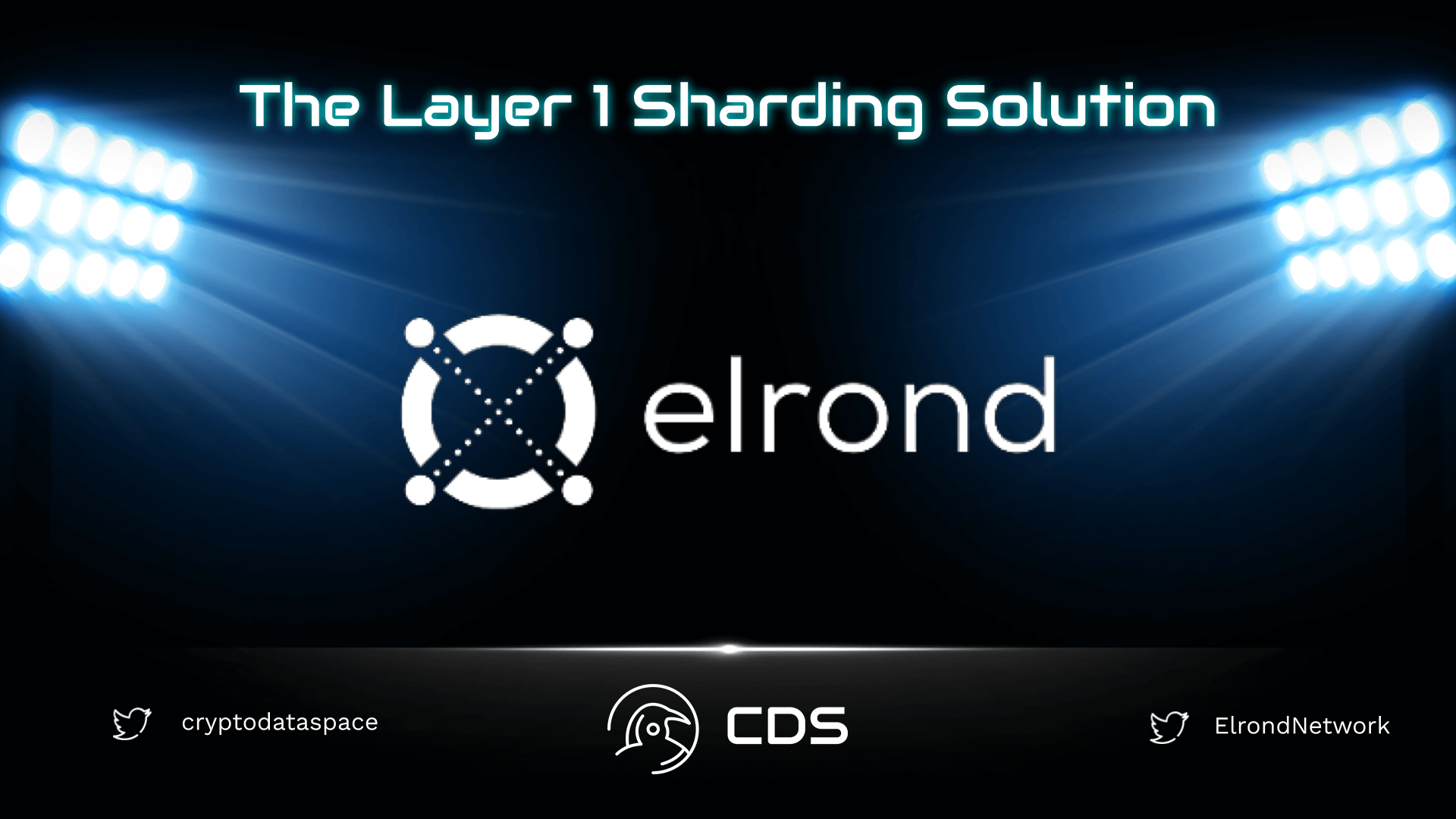













Leave a comment